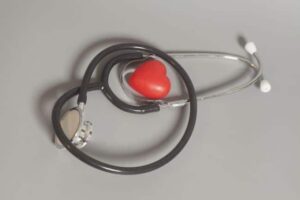In this informative video, Dr. Minkoff from Lifeworks Wellness Center delves into the topic of POTS (Postural Orthostatic Tachycardia Syndrome).
He explains how POTS commonly manifests as an abnormal increase in heart rate upon standing, leading to dizziness and potential fainting episodes.
While POTS patients are often referred to cardiologists, neurologists, or ENT specialists, there are other potential causes and solutions to consider.
Dr. Minkoff sheds light on various underlying factors that can contribute to POTS, including Lyme disease, parasitic infections, and abnormalities in the upper cervical spine, such as misalignment of the Atlas bone or Chiari malformation.
He highlights the importance of a comprehensive diagnostic approach that includes specialized upper cervical chiropractic evaluations and imaging techniques that account for postural variations.
Dr. Minkoff emphasizes that many POTS cases can be successfully diagnosed and treated, offering hope to those seeking relief from this debilitating condition.
If you or someone you know is struggling with POTS, watch this video to gain insights and explore potential solutions for improved health and well-being.
Watch the POTS Video

Hi, Dr. Minkoff, LifeWorks Wellness Center. I want to talk to you about POTS…P-O-T-S.
Postural is P, Orthostatic is when you stand up, T is Tachycardia.
So traditionally POTS is you stand up, your heart goes like this and then you fall on your face because your blood pressure doesn’t stay up enough to keep your brain with blood and you fall over.
Now most people with POTS are sent to ear, nose and throat people, they’re sent to cardiologists and sometimes the conditions are remediable from cardiologists and from neurologists and from ENT people and fine, those those guys don’t get this but POTS is actually very common and POTS can also be caused by other things.
Sometimes Lyme disease presents as POTS, sometimes parasitic disease presents as POTS and sometimes people have an abnormality in the vertebral, in the connection between their upper cervical, so that’s their neck, spine and their skull and that top bone called the Atlas.
So the skull is here, it sits on the Atlas.
Now that’s a very flexible joint, you know it can move in all these directions and sometimes that Atlas bone gets twisted out of place.
You had a car accident, you were playing hockey, you got hit in the head, you got a concussion, you got a whiplash and that bone got moved out of place.
And when that bone isn’t in the right place the circulation and the fluid that’s around the spine, the cerebral spinal fluid, sometimes can get blocked and this can cause POTS in people.
Sometimes people have a hole in their head at the bottom, so the brain is sitting up here, it comes down to the spinal cord, it goes through this hole and sometimes the hole is a little bit too big.
And under certain circumstances the brain can slip down a little bit, this is called Chiari and sometimes people with Chiari are undiagnosed and they can present with POTS.
Now the traditional radiologist or traditional neurologist, when they do neck x-rays, they take it with you laying down and if you have Chiari you don’t see it laying down because when you’re laying down the brain relaxes back and you don’t see that the brain is slipped down too low.
If you do the X-ray sitting up you can see it and you can see the brain is jammed down into that thing.
Sometimes it occurs when the bone is twisted out of place and if you do an x-ray study where you shoot some dye up here, you can see that one side the dye is going through to the brain and the other side is not going through.
So there’s a subspecialty in Chiropractic called upper cervical.
We work with a great great upper cervical chiropractor and so with POTS disease I always send them there and ninety percent of them have a problem in there.
Now they may have an infection too that we have to work on, we work on that.
Usually these POTS cases solve, like they solve.
So it’s something we can treat, it’s something we can diagnose and it’s something that in most cases we’re successful at.
Okay, so that’s POTS disease, try us because there’s a good chance we can help you.












